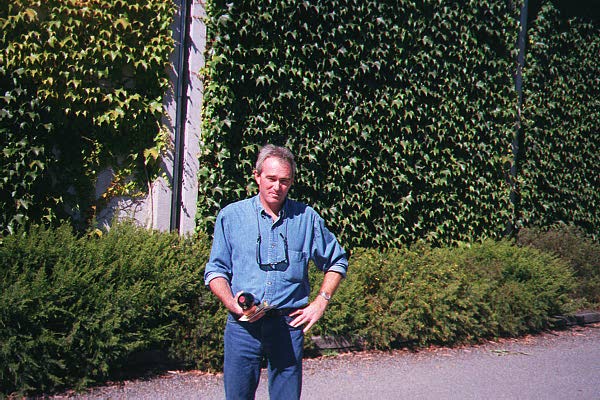 |
Tim Stevens |
 |
Tim Stevens |
As a varietal wine, Sauvignon Blanc (SB) is still in transition from "poor man's Chardonnay" to a fully respected position at the wine drinker's table. However, knowledge of SB's purpose and potential is improving over time, providing dividends to those willing to explore what this wine has to offer.
The International Wines for Oysters Competition, conducted by Washington's Old Ebbit Grill, has done much to elevate the status and raison d'etre of SB. Its primary role is to accompany food - and not just seafood. Try it with vegetarian dishes, summer salads, low fat foods and even spicy dishes. Also use it as an aperitif in your meal strategy - it pairs particularly well with goat cheese (ask for our selections).
While Chardonnay tends to coat the mouth like a blanket, SB attacks the palate with its freshness. This results in part from winemaking approaches. SB rarely involves the manipulative techniques used in making Chardonnay (e.g. malolactic fermentation). Many of the best SBs utilize stainless steel for fermentation, with little use of oak barrels. When made successfully, the resulting wines are bright and refreshing.
The white wines of Bordeaux, however, often use oak barrels for aging (in addition to blending with Semillon) to achieve a rounder and creamier flavor profile. Robert Mondavi initiated use of the term "Fume Blanc", which is used on some California Sauvignon Blancs (careful - not all Fume Blancs are barrel fermented).
The challenge in making good SB lies in achieving balance. If the grapes get too ripe (as often happens in hot growing climates), they lose desired acidity. SB from cooler areas tends to exhibit more vegetative and grassy flavors (sometimes referred to as "cat pee" aromas). Warmer growing areas tend to show more fruit flavors (apple, peach, etc.) The better vineyard managers use canopy management techniques (such as exposing the grapes to more sunlight) to achieve balance between the two flavor profiles.
Among the world's best are the New Zealand SBs. Growing conditions are especially favorable - particularly in Marlborough. The weather is sunny and dry during the growing season, with daytime temperatures around 75degrees, and nighttime temperatures in the low 50s. The coolness seems to nurture the acidity, and draw out the characteristic pungency with hints of gooseberry, kiwi fruit, etc. While Cloudy Bay may be considered the signature label, don't stop here. Goldwater Estate's SB is powerful and ripe, delivering a long rich finish - likely to cause even a diehard Chardonnay fan to ask for more. Also look for Isabel Estate Vineyard SB.
From France, look for selections from the appellations of Sancerre and
Pouilly Fume. Also look for selections from Touraine - nearly as
good at half the price. Even Virginia gets in on the act. Linden
Vineyards utilizes the best site in their vineyard for growing SB ("Glen
Manor"). There are so many good choices - so little space.
You may want to try some of the following:
| Year | Apellation | Locale | Price |
|
|
Sancerre Thomas | France |
|
|
|
di Lenardo | Italy |
|
|
|
Casa Lapastolle | Chile |
|
|
|
Ponder Estate | New Zealand |
|
|
|
Honig | Napa |
|
|
|
Linden | Virginia |
|